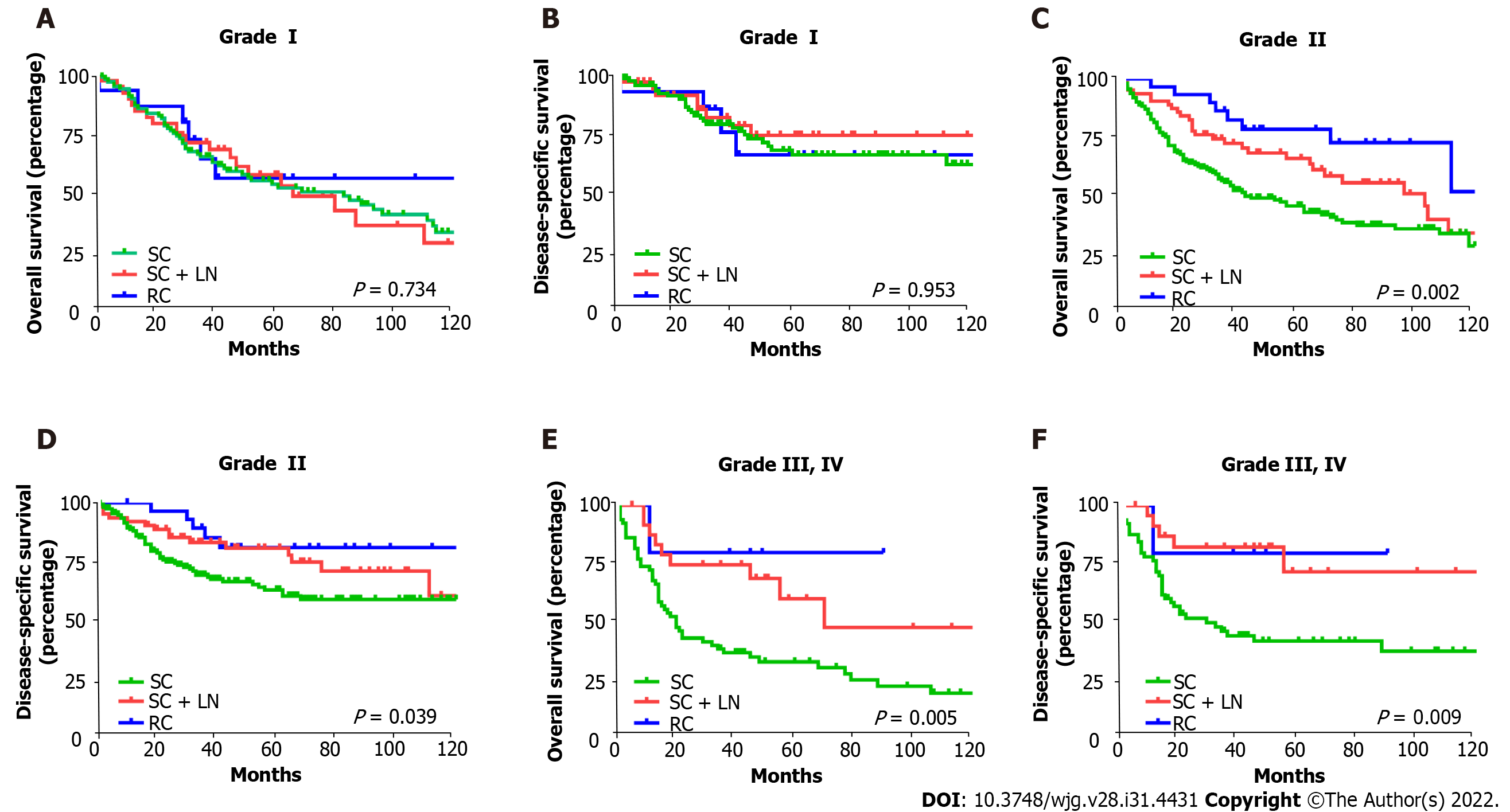Copyright
©The Author(s) 2022.
World J Gastroenterol. Aug 21, 2022; 28(31): 4431-4441
Published online Aug 21, 2022. doi: 10.3748/wjg.v28.i31.4431
Published online Aug 21, 2022. doi: 10.3748/wjg.v28.i31.4431
Figure 1 Flow diagram of the study population.
A total of 528 patients with T1bN0M0 gallbladder cancer were included in this study.SEER: Surveillance, Epidemiology, and End Results database; AJCC: American Joint Committee on Cancer; TNM: Tumor-node-metastasis; GBC: Gallbladder cancer; N: Number.
Figure 2 Overall survival and disease-specific survival of 528 patients with T1b gallbladder cancer who received different surgical treatment assessed using Kaplan-Meier analysis, and the proportions of different surgical approaches.
A: Overall survival of patients with T1b gallbladder cancer (GBC) received simple cholecystectomy (SC), SC with lymph node resection (SC + LN), or radical cholecystectomy (RC) (P < 0.001); B: Disease-specific survival of patients with T1b GBC who received SC, SC + LN, or RC (P = 0.003); C: The proportions of different surgical approaches in patients with different pathological grades of gallbladder cancer. SC: Simple cholecystectomy; LN: Lymph node resection; RC: Radical cholecystectomy.
Figure 3 The overall survival and disease-specific survival of patients with T1b gallbladder cancer stratified by pathological grades and surgical treatment using Kaplan-Meier analysis.
A: Overall survival (OS) of patients with grade I T1b gallbladder cancer (GBC) by type of surgery (P = 0.734); B: Disease-specific survival (DSS) of patients with grade I T1b GBC by type of surgery (P = 0.953); C: OS of patients with grade II T1b GBC by type of surgery (P = 0.002); D: DSS of patients with grade II T1b GBC by type of surgery (P = 0.039); E: OS of patients with grade III, IV T1b GBC by type of surgery (P = 0.005); F: DSS of patients with grade III, IV T1b GBC by type of surgery (P = 0.009). SC: Simple cholecystectomy; LN: Lymph node resection; RC: Radical cholecystectomy.
- Citation: Shao J, Lu HC, Wu LQ, Lei J, Yuan RF, Shao JH. Simple cholecystectomy is an adequate treatment for grade I T1bN0M0 gallbladder carcinoma: Evidence from 528 patients. World J Gastroenterol 2022; 28(31): 4431-4441
- URL: https://www.wjgnet.com/1007-9327/full/v28/i31/4431.htm
- DOI: https://dx.doi.org/10.3748/wjg.v28.i31.4431











